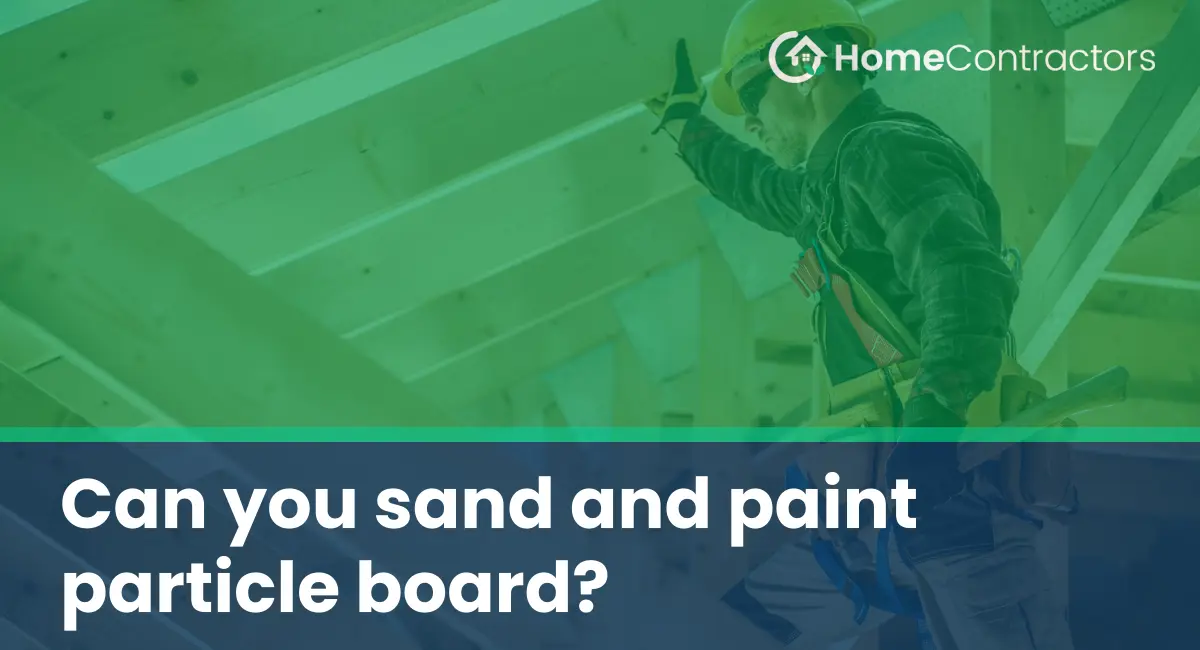Particle board is an affordable and versatile material that is commonly used in furniture and cabinetry construction. While particle board offers many advantages, its smooth, non-porous surface can present a challenge when it comes to refinishing or painting. In this article, we will explore whether sanding and painting particle board is possible, and if so, the steps you should follow to achieve a beautiful, long-lasting finish.
Understanding Particle Board:
Before delving into the process of sanding and painting particle board, it’s important to understand its composition. Particle board is made from wood particles, such as wood chips or sawdust, that are combined with a resin or glue binder and pressed together under high temperature and pressure. This manufacturing process is what gives particle board its smooth, dense surface that can pose difficulties for refinishing.
Sanding Particle Board:
Sanding is a crucial step in preparing any surface for painting, but it can be tricky with particle board due to its composition. While it is possible to sand particle board, it’s vital to be cautious to avoid damaging or weakening the material. Here are the steps to follow when sanding particle board:
- Assess the thickness: Particle board is typically composed of a thin layer of veneer on top, which means that sanding too aggressively can remove this layer, exposing the rough core beneath. Generally, it is best to avoid sanding particle board that is less than ¼ inch thick.
- Gather the necessary tools: You will need a fine-grit sandpaper or sanding block, preferably between 180-220 grit, to avoid excessive abrasion. Also, use a sanding mask to protect yourself from dust particles.
- Sand lightly: Start by lightly sanding the particle board surface using long, even strokes. Aim to smooth out any imperfections, scratches, or blemishes without applying excessive pressure. The goal is to create a slightly rough texture to enhance adhesion.
- Dust and clean: After sanding, thoroughly clean the surface to remove any dust or debris. Use a vacuum cleaner or a clean cloth to ensure a clean working area. Any remaining particles can interfere with the paint adhesion.
Painting Particle Board:
Once the particle board is sanded and clean, you can proceed with painting it. However, to achieve a successful and durable finish, a few additional considerations must be kept in mind:
Choosing the right primer: Since particle board is highly absorbent, it is essential to use a high-quality primer specifically designed for porous surfaces. The primer will help seal the material, prevent bleed-through, and enhance paint adhesion. Apply the primer evenly and according to the manufacturer’s instructions.
Selecting the appropriate paint: Opt for a paint that is suitable for your desired finish, whether it be a glossy, satin, or matte look. Acrylic latex paint is often recommended as it offers excellent coverage and dries quickly. Alternatively, you can also use oil-based paint, but note that it tends to dry more slowly and emits strong fumes.
Applying multiple coats: To achieve a professional and uniform appearance, it is recommended to apply two or three thin coats of paint rather than one heavy coat. Allow each layer to dry completely before applying the next, and lightly sand any imperfections between coats for a smoother finish.
Protecting the painted surface: Once you have achieved the desired paint finish, consider applying a clear protective topcoat, such as polyurethane. This will provide an extra layer of durability and protect the painted surface from scratches and moisture damage.
While sanding and painting particle board can be a slightly challenging task, it is indeed possible to refinish this versatile material. By carefully sanding the surface, selecting the appropriate primer and paint, and applying multiple thin coats, you can achieve a beautiful and long-lasting finish. Following the steps outlined in this article will help transform your particle board furniture or cabinetry, giving them a refreshed and updated look.
